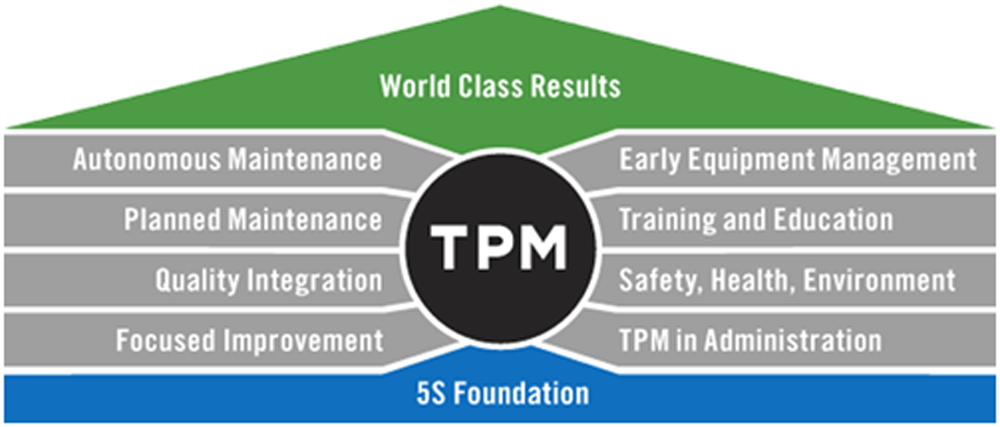Industrial Consulting

Our Industrial Consulting practice serves industries with TPM based business solutions for productivity improvement, higher uptimes, lower breakdown maintenance, efficiency improvement in different business processes and analytical approach in equipment/plant investment and other business decisions.
TPM (Total Productive Maintenance) is a holistic approach to equipment maintenance that strives to achieve perfect production:
- No Breakdowns
- No Small Stops or Slow Running
- No Defects
In addition, it values a safe working environment ensuring ZERO accidents
TPM emphasizes proactive and preventative maintenance to maximize the operational efficiency of equipment. It blurs the distinction between the roles of production and maintenance by placing a strong emphasis on empowering operators to help maintain their equipment.
The implementation of a TPM program creates a shared responsibility for equipment that encourages greater involvement by plant floor workers. In the right environment, this can be very effective in improving productivity (increasing up time, reducing cycle times, and eliminating defects).
Traditional TPM
The traditional approach to TPM was developed in the 1960s and consists of 5S as a foundation and eight supporting activities (sometimes referred to as pillars).
The traditional TPM model consists of a 5S foundation (Sort, Set in Order, Shine, Standardize, and Sustain) and eight supporting activities.
The 5S Foundation
The goal of 5S is to create a work environment that is clean and well-organized. It consists of five elements:
- Sort (eliminate anything that is not truly needed in the work area)
- Set in Order (organize the remaining items)
- Shine (clean and inspect the work area)
- Standardize (create standards for performing the above three activities)
- Sustain (ensure the standards are regularly applied)

It should be reasonably intuitive how 5S creates a foundation for well-running equipment. For example, in a clean and well-organized work environment, tools and parts are much easier to find, and it is much easier to spot emerging issues such as fluid leaks, material spills, metal shavings from unexpected wear, hairline cracks in mechanisms, etc.
We advise clients from design to implementation of the TPM program. Our role starts from making a current state analysis, identifying areas for improvement, prioritize the areas based on their overall impact, followed by a comprehensive design of the TPM program and implementation. Typical TPM programs require between 6 to 18 months, depending on the scope of work, number of locations, goals defined, and so on.

